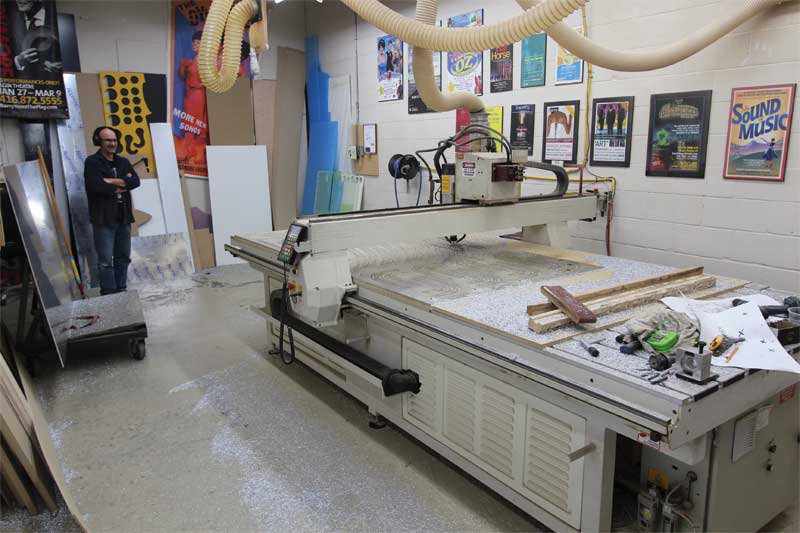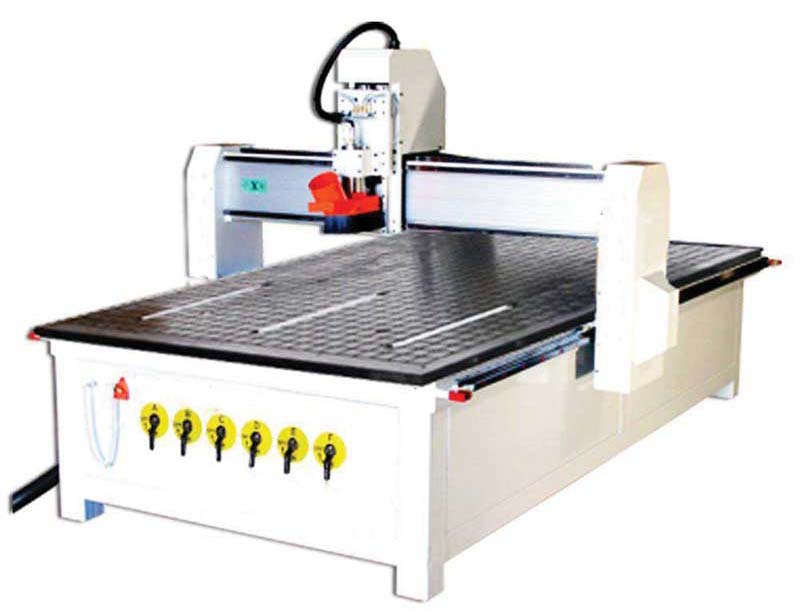Cutting direction

Ultimately, it is up to the machine operator to establish the proper settings for the sign shop’s applications, which will involve a process of trial
and error.
In addition to selecting the router bit based on the material to be cut, it is essential to take the primary cutting direction—i.e. up or down—into account, so as to avoid damaging the material.
Upcut bits, as their name suggests, are beneficial because they pull the chips up and away from the material, but they will splinter plywood and melamine. Meanwhile, downcut bits, which press waste back into the cut, are great for cutting aluminum, but will melt plastics. This is because not allowing the chips to escape will create friction and, thus, a buildup of heat. A downcut endmill bit is suitable for slower feed rates and cutting shallower holes, where the finish is key.
Compression bits cut both up and down. They are generally a little more expensive, but provide a useful multi-purpose option for routing wood and, especially, plywood.
Other considerations
When purchasing a bit in the first place, there are several other factors worthy of attention, to ensure the sign shop gets the ‘biggest bang for the buck.’ Durability and performance, for example, are important to look into before making a significant investment in the technology.
Sharper bits provide clean cuts and will allow the machine to run quieter and use less power.

The speed of a cutting feed will depend on the strength of the vacuum table holding the material down.
Shorter bits will also usually provide cleaner cuts, whereas longer bits tend to increase the degree of vibration, potentially causing the bit to bend. A larger shank diameter on the bit, meanwhile, will result
in cleaner cuts and prove more durable.
The longevity of CNC bits also depends on operators taking good care of them. This includes proper storage (e.g. in a dedicated ‘tool library’) and keeping them sharpened as needed. Cut consistency can also be ensured by always warming up the spindle prior to routing.
Once a sign shop has mastered the basics of CNC routing, highly specialized bits are also available for such purposes as boring holes, surfacing large panels, cutting miter folds (i.e. notches for angled folds) or routing frames for graphics. Indeed, with today’s range of CNC bits, a router can fabricate almost anything a signmaker might design.
With files from Laguna Tools, which manufactures CNC routers, fibre lasers, band saws, jointers, planers, mortisers, dust collectors and blades. For more information, visit www.lagunatools.com.





